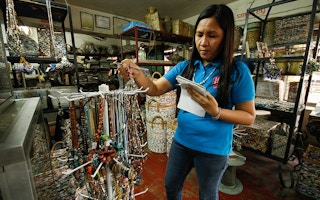A shift is underway in gender equality, the scale of which I could not have fully envisioned when I embarked on my career as an international civil servant more than three decades ago with a commitment to making a difference in all women’s lives.
While Asia and the Pacific has experienced unprecedented prosperity, progress in gender equality has been disparate. Affluence has precipitated the emergence of a middle class that has allowed women access to education and to good health care. Many women have risen to corporate heights and to positions of leadership. There are women CEOs and even women billionaires in Asia.
But the region is not homogenous. In some countries where women have been educated, this privilege does not translate into good employment opportunities, let alone mobility. Even when women are employed in the formal sector, they often have the right to work but they do not necessarily have rights at work.
The challenging issues that I was committed to addressing at the beginning of my career remain the glaring impediments to inclusive equality for all women.
We should never forget the women who work under very precarious conditions. We cannot ignore the women who are not allowed to own businesses or property. And we should never forget the extent of violence that women face, that one in three women experience in their lifetime.
“
In some countries where women have been educated, this privilege does not translate into good employment opportunities, let alone mobility.
These issues haven’t disappeared from women’s lives and it is imperative that we continue to focus on what has eluded us for so long, and tackle the unfinished business from the Beijing Declaration and Platform for Action, almost 25 years after this most progressive conference on advancing women’s rights. In short, we must “Leave no one behind.”
Investing in a transformative shift in favor of equality for women
How can we accelerate this shift on a global scale? I continue to place my faith in the potential of international institutions to enable concerted solutions for equality despite the sticky floor.
We now have a more holistic gender architecture at the United Nations and UN Women, where women are better positioned to have a seat at the decision-making table. So even if we have sticky floors in international organisations, we need to clean them to create opportunities for as many women as possible, and to get leadership at the top to mainstream gender issues.
Having women leaders is absolutely vital because we find an embodied commitment to mainstreaming. For example, women transform institutional cultures as they address issues that are often overlooked: life-work balance, gender pay gap, parental leaves, valuing the caregiving role of women, ensuring young women have mentors, and other priorities.
Enable women to step up to leadership will require the “3 Cs”. A woman leader must be able to articulate and communicate a vision. She must be able to connect and build partnership, not only internally but also externally. In order to sustain energy and momentum, she must have the opportunity to create a community of people who share the same vision. I found this extremely important for my own leadership journey.
In the face of inequality, international organisations can have a direct impact on shifting the balance for women. When an international organisation tackles infrastructure, it is not just physical infrastructure.
It also invests in social infrastructure, dealing with the issues of inequality, making sure that our region creates a shared prosperity, connecting high-growth countries with less developed countries and landlocked countries with corridors of prosperity. Investing in social infrastructure means ensuring that all our people are well-educated, and that this education is relevant in a rapidly changing world.
Today, our region is looking at how to build capacity to deal with the new challenges of climate change, technological disruption, and innovation. We are investing in enterprises of the people so they can create the shared prosperity that we all would like to see.
Having a social protection floor for our region is vital: how do you make sure that there is social sustainability but also social security so everyone can participate in the emerging economies and be resilient in the face of change?
In the face of these policy, technological and social shifts, we must also invest in a transformative shift in favor of equality, so women can play a greater role in providing solutions and leadership for the region.
Noeleen Heyzer is the former United Nations under-secretary-general. This article was originally published on the Asian Development Blog.









